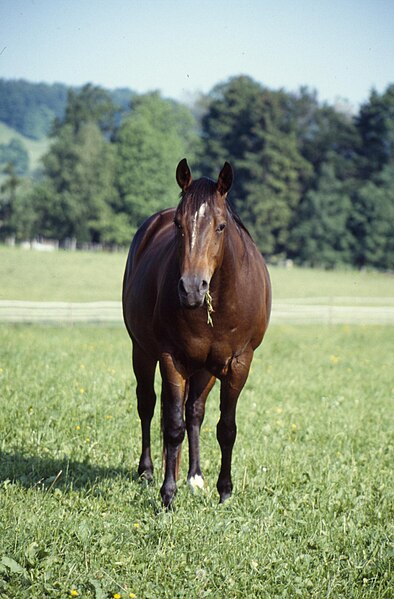Equine polysaccharide storage myopathy
Equine polysaccharide storage myopathy is a hereditary glycogen storage disease of horses that causes exertional rhabdomyolysis. It is currently known to affect the following breeds American Quarter Horses, American Paint Horses, Warmbloods, Cobs, Dales Ponies, Thoroughbreds, Arabians, New Forest ponies, and a large number of Heavy horse breeds. While incurable, PSSM can be managed with appropriate diet and exercise. There are currently 2 subtypes, known as Type 1 PSSM and Type 2 PSSM.
A representation of glucose molecules linked by α-1,4-glycosidic bonds, with a single α-1,6-glycosidic bond leading to a branch off of the chain.
The Belgian Draft is one breed with a very high prevalence of PSSM in their population.
The American Quarter Horse, or Quarter Horse, is an American breed of horse that excels at sprinting short distances. Its name is derived from its ability to outrun other horse breeds in races of 1⁄4 mi (0.40 km) or less; some have been clocked at speeds up to 44 mph (71 km/h). The development of the Quarter Horse traces to the 1600s.
A chestnut American Quarter Horse
A photograph of Peter McCue, taken in Oklahoma around 1905
The Quarter Horse is well-suited for the western disciplines.
A halter-type Quarter Horse






